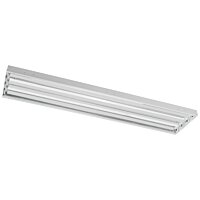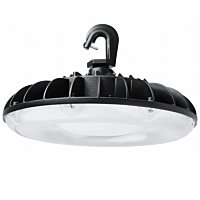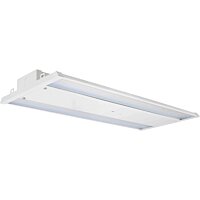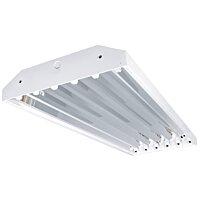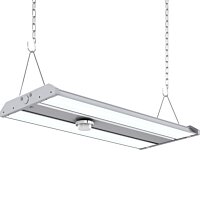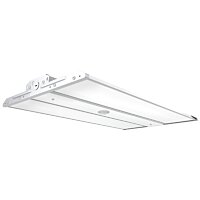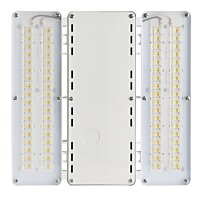LED Low Bay Lighting Guide
There are many indoor lighting applications that require intense lumen outputs from relatively low ceiling heights. While there are many fixtures that are up to this task, one of the most popular types in existence are low bay fixtures.These fixtures are specifically designed to provide intense illumination with a broad beam pattern to provide excellent light coverage from lower mounting heights.
These fixture types have been in existence for quite some time, however up until recent years they have utilized traditional lighting technology, namely fluorescent tubes in T12 and T8 varieties. Thanks to the advent of modern LED lighting technology, the already high performance of these lights has been boosted dramatically, with far higher energy efficiency as well as dramatically higher lumen output and nearly double the useful service life.
We offer LED low bay lights that deliver some of the best lumens-per-watt on the market. This means our fixtures deliver exceptional performance with high energy efficiency. In other words, when you use our low bay’s you get optimal illumination while saving costs.
Triton LED Low Bay
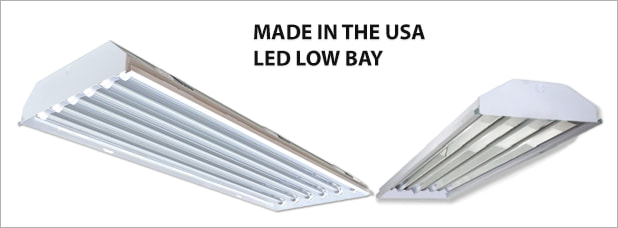
The Triton LED Low Bay by Straits Lighting is the primary model we offer. This fixture is constructed with die-formed heavy gauge cold rolled steel for maximum durability and provides reliable energy efficient illumination for ceiling heights up to 30 feet. Due to it’s high energy-efficiency and durable design, Triton Low Bays are ideal for warehouses and commercial lighting applications such as retail stores.
We offer two separate versions of the Triton Low Bay fixture. Each of these versions are 4 feet in length; however, the differing variable is the amount of lamps the fixture can hold. One version holds 6 lamps, while the other design holds 4 lamps.
Whichever style you choose, we advise using our LED T8 Tubes to maximize performance and energy efficiency.
Low Bay Lighting Layout Design
Just like any other type of lighting configuration, it is vital for low bay lighting to be set up properly with a tailor made photometric plan. These plans will not only result in the best possible illumination, but also will ensure maximum energy efficiency - saving end users tremendous amounts in long term costs. There are several important factors to consider when designing a low bay photometric plan, beginning with the specific application’s lumen requirements, as well as physical factors such as the ceiling height and dimensions of the area to be illuminated.
After ceiling height is determined, it is a relatively straightforward process of selecting a lighting fixture that produces the appropriate foot candle rating at ground level with the required beam angle to provide optimal coverage. The next factor to consider is room dimensions, which can present a challenge when they are irregular or strangely shaped. Using basic information such as square footage is not enough in these situations, as it doesn’t take into account fixture orientation for the most effective lighting configuration. In some cases, applications may require multiple types of fixtures with different wattages or sizes in order to provide proper lighting coverage for the whole room.
With such a wide variance of factors that are unique to each application, designing an effective lighting setup is a difficult task even for experienced lighting contractors. Recognizing this challenge and importance of a proper photometric plan, we offer our very own in-house professional photometric planning in order to provide our customers with both an energy efficient and effective lighting solution for their specific application.
To showcase our photometric planning capabilities, below is an example of a low bay photometric design for a gym area that our photometric planners created for a fitness center manager. The plan is specifically tailored for fixtures hung from a 14 foot ceiling in a room measuring 115 by 300 foot, covering 34,500 square feet in total area.
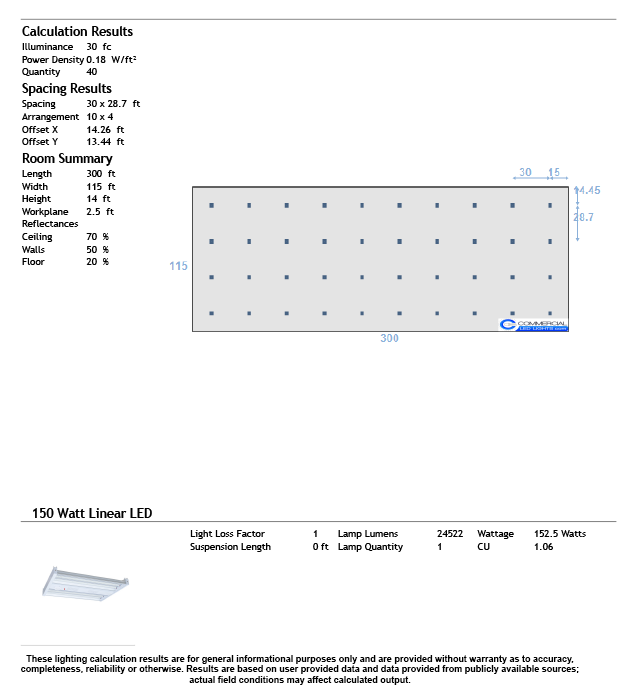
This plan doesn’t just cover foot candle requirements, it also covers details such as the number of fixtures required as well as the total lumen output, fixture wattage, fixture spacing, etc.
Frequently Asked Questions
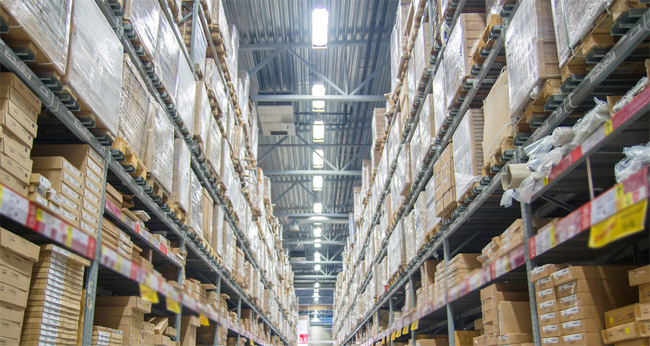
Q. What are Low Bays?
Low bay lighting fixtures are used to provide lighting in areas with low ceilings. Ceilings that are considered “low” by industry standards are generally under 20 feet.
Q. What are Low Bays used for?
Low bays are used to provide the necessary levels of illumination for ceilings that are lower than about 20 feet. These lights are specially designed to diffuse light and minimize brightness and reflections in order to create a pleasant atmosphere for people throughout the facility. These fixtures commonly use LED tubes and are found throughout low ceiling storage areas, retail stores, small warehouses, etc.
Q. What are High Bays?
Unlike low bays, high bay lights are used for ceilings that are higher than about 20 feet. These fixtures project stronger lighting in order to ensure necessary illumination. These lights are found throughout larger buildings such as large warehouses, recreational facilities, airports, etc.

